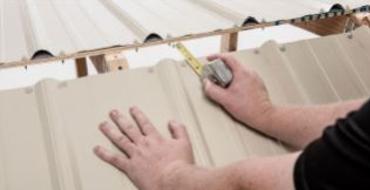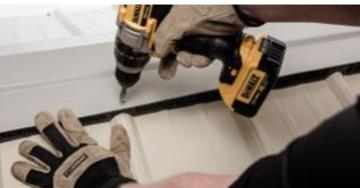Vented Foam Closure

The vented foam closure is made from a durable, modified polyester and is a non-woven, non-wicking, fiber-based matting. Its specially cut contours provide a custom, low-profile fit for any pitch. The vented foam closure is carried in both the 9-36 Large Tab and 12-36 Large Tab to fit each profile respectively.
The vented foam closure product provides a superior net-free ventilation area that helps keep out moisture, pests and dust and can be installed by just one person in three easy steps. In fact, the screw bed and industrial strength peel-and-stick adhesive that is pre-applied makes this one of the easiest installations imaginable.
The vented foam closure product provides a superior net-free ventilation area that helps keep out moisture, pests and dust and can be installed by just one person in three easy steps. In fact, the screw bed and industrial strength peel-and-stick adhesive that is pre-applied makes this one of the easiest installations imaginable.
Superior net-free ventilation reduces condensation
Easy, one-person installation
Moisture and pest barrier
Proprietary adhesive provides superior hold
40-year limited warranty
Non-obtrusive appearance
Helps reduce utility costs
ASTM testing: D1929, D737, D1294-86, D2261-83*
Closures to fit the following profiles
- 9-36
- 12-36/Reverse
The Flex O Vent product is made from the same polyester-based material as the vented foam closure. Flex O Vent comes in easy to install 10′ rolls. It’s durability and easy installation make it an excellent choice for ventilating your building. Flex O Vent can be easily pressed to meet the contours of your metal profile for a uniform fit.

Step 1
Allow a 2″ slot at the ridge of the metal roof for ventilation. Apply the vented closure to the metal roof by removing the backing paper.

Step 2
Align the vented closure 1/2″-1″ up-slope from the edge of the ridge cap. Place onto metal roof with adhesive side down. Note that the adhesive is strong and once put in place it will be hard to move. Be sure the vented closure is in place the first time.

Step 3
When attaching consecutive vented closures, butt fit the pieces together. Metal Roof Sealant can be used to seal the butt joint. Place ridge cap over the vented closure. Secure in place with fasteners; fasten through the metal roof ridge locations, avoiding penetrating the vented closure insert material utilizing the screw bed locations.
